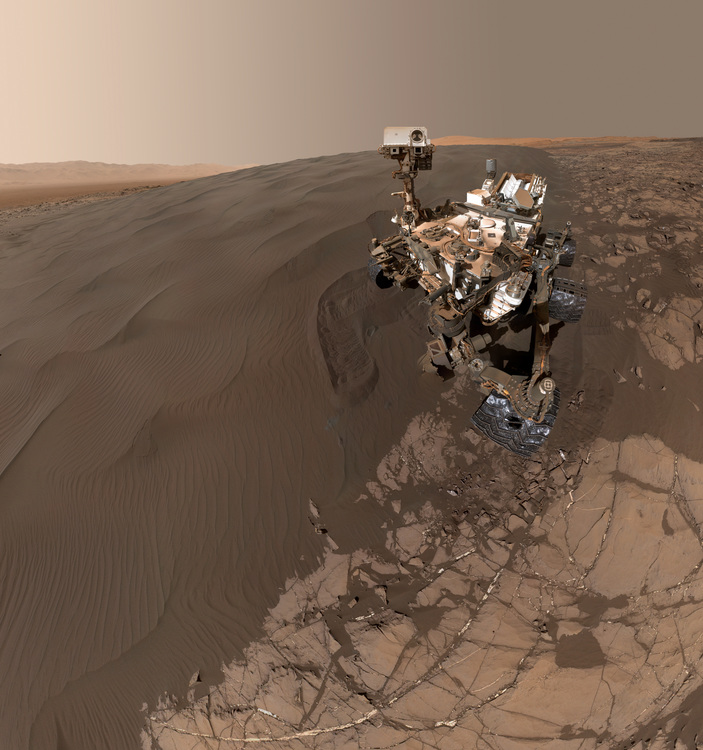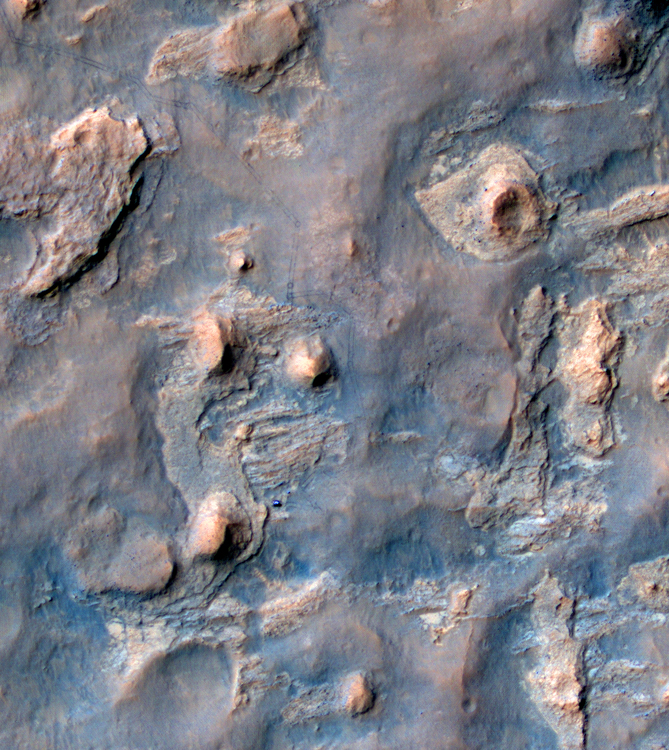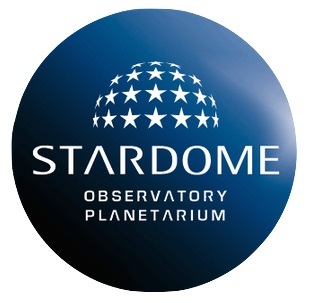On 5 August 2017, 54.6 million kilometres from Earth, amongst the red dust and rocks, the familiar tune of Happy Birthday sang out on Mars as the Curiosity rover celebrated 5 years on the red planet. The Sample Analysis at Mars (SAM) instrument, usually occupied with soil analysis, has also been programmed to sing out birthday celebrations every year for Curiosity, arguably the loneliest birthday party in the Solar System.
Mission to Mars
Our closest neighbour, Mars was a natural target for exploration on land. Its solid terrain means we can land on it, and it doesn’t have the extreme temperatures and weather of Mercury and Venus. If scientists wanted to drive on flat land, Mars was the only candidate.
Curiosity launched on 26 November 2011 and landed on Mars almost 9 months later on 5 August 2012. This mission to Mars was a continuation of the work of Pathfinder and the rover Sojourner and the twin rovers Spirit and Opportunity. The Pathfinder lander (later renamed the Carl Sagan Memorial Station) launched the small, wheeled rover Sojourner in the Mars Ares Vallis area. Its mission was to prove that “faster, better and cheaper” spacecraft were achievable, to show that it was possible to send scientific instruments to another planet with a simple system, cheaper than the previous Viking mission, and to demonstrate NASA’s commitment to low-cost planetary exploration by completing the mission on budget.
Five years later, the Curiosity rover landed on Mars with more advanced equipment and goals to determine the organic make-up and chemical building blocks on Mars and to understand the atmospheric evolution processes and surface radiation.
The name Curiosity was selected from a nationwide essay contest. Students from across the United States submitted entries to name the rover. Then 12-year-old Clara Ma from Kansas wrote in her winning essay:
Curiosity is such a powerful force. Without it, we wouldn’t be who we are today.
Clara Ma
Scientific technology
On board, the rover is a collection of instruments for the analysis of the Mars environment. The Curiosity team surveys the surface using 17 cameras, looking for features of interest. Once a target is selected, the rover uses lasers to break apart or vaporise the rocks and soil and then look at the rock’s composition. This process helps to understand the make-up of Mars and is a search for life (checked for before vaporising the rocks). If the sample looks interesting, Curiosity will dig into the soil and send a powdered sample to the SAM instrument (the same one that sings Happy Birthday). We already know that no flowing water exists on the surface on Mars, but potentially underneath the soil is frozen water remnants of riverbeds, lakes or craters. In an ongoing hunt for the first life outside of Earth, Curiosity is searching in the soil for microbes that would be present in water.
So far, Curiosity has helped scientists to understand the chemical composition of the Martian soil, showing that what may have been suitable for sustaining strong life is not. Curiosity has also shown us that the rocks and soil on Mars, when they interact with UV rays from the Sun, make for a chemically toxic combination. Curiosity has detected that Mars could have supported microbial life, discovered evidence of an ancient streambed and found the key chemical ingredients for life. Far from ruling out human life on Mars, Curiosity has helped scientists understand what will be required to overcome the environment, what the equipment will need to withstand and what those first brave astronauts will need to survive the cold, radiation and weather.
Curiosity was sent with a 2-year life expectancy, but after 5 years, it’s still running, not using the solar panels for power but residual radioactive decay. In 2012, its mission was extended indefinitely. It is expected to keep going until it can’t any longer. Many NASA space missions continue beyond the projected end date – Voyager is still going, and New Horizons is still sending data. If the instrument won’t disturb or contaminate an environment and it’s still delivering useful information, NASA will continue the mission.
The Mars 2020 mission
Curiosity has also informed the next NASA mission to Mars, named Mars 2020. This rover will be equipped with a drill to take core samples from rocks and store them in airtight tubes. These samples will then be transported to caching sites where they will be deposited under the Martian surface to protect them from UV radiation until future missions retrieve them for analysis.
Three sites of interest have already been shortlisted by scientists – Columbia Hills, Gusev, Jezero Crater and NE Syrtis. All of them have evidence of water, which could mean the presence of microbes.
The Mars 2020 mission goals are to determine whether life ever arose on Mars, characterise the climate of Mars, characterise the geology of Mars and prepare for human exploration. Mars 2020 will be launched in July/August 2020, and the proposed mission duration is at least 1 Mars year.
The Mars Curiosity rover discoveries and what it stands for continue to inform future exploration of Mars, long after its power reserves are depleted and it permanently parks on Mars.
In the words of Clara Ma:
We have discovered so much about the world, but still so little. We will never know everything there is to know, but with our burning curiosity, we have learned so much.
Clara Ma
Mars InSight Mission
On Tuesday 28 November 2018 New Zealand time, the Curiousity Rover was joined by the InSight lander. The lander touched down on the Elysium Planitia, a still, flat region on Mars, where it’s set to study seismic waves and heat deep below the surface of the Red Planet for a planned two-year mission.
Nature of science
Engineering the technology used in scientific missions to gather data is just as important as the findings and interpretation the technology enables. Scientists and engineers working together within the science field create advances in technology that can often benefit people in everyday life.
Related content
These two articles, Curiosity rover lands on Mars and Updates from Mars give further details about the Curiosity rover mission and its initial findings.
These citizen science projects could also be used in an astronomy unit focused on the planet Mars:
- The Planet Four project wants help from citizen scientists to help explore the surface and weather of the Mars south polar region.
- Use the AI4Mars project to help scientists train Mars rovers how to classify Martian terrain.
How does a Kiwi kid go from dreaming about flight to working on the B-2 stealth bomber and the Mars exploration rovers? Dr Allan McInnes did, and this article talks about Allan’s interest in computers and programming and how he ended up designing the Mars space rover.
Useful links
You can follow Curiosity:
- Twitter: @MarsCuriosity
- Facebook: @MarsCuriosity
- Online: https://mars.nasa.gov/msl
Watch this short animated video that rolls Mars around to show all the major features of the Martian topography. It begins with a hemispherical view of Olympus Mons and Valles Marineris and then rolls around to reveal the Martian South Pole. While traversing Northward, it passes Hellas Basin and ends up looking down on the Martian North Pole.
Acknowledgement
This article has been written by Stardome Observatory and Planetarium, which has been operating since 1967. It is a place of exploration, research and sharing of knowledge and hosts New Zealand’s first and still largest planetarium theatre. Stardome Observatory and Planetarium celebrates its 50th anniversary in 2017.




